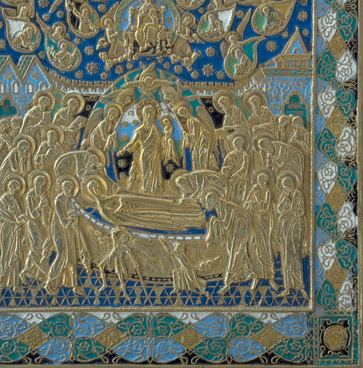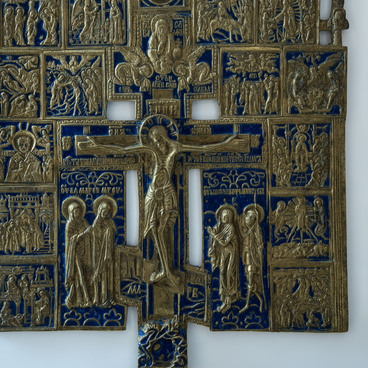Russian masters learned to make cast metal icons and paint sacred images on wood from the Greeks. The most popular and simple images in pre-Mongol times were miniature crosses worn on the body — “korsunchiki”. Cast icons of small size were more difficult to manufacture. They also served as portable icons that were always carried by believers, while larger ones were kept in houses and churches.
As in the case of traditional one-sided icons, Russian craftsmen learned to create folding icons with two or three panels from the Greeks. Folding icons with four panels were a Russian invention of the first half of the 18th century. The Old Believers’ copper foundry of the Danilovsko-Vygoretsky hermitage near Lake Onega was the first to start producing such icons.
In terms of technical difficulty and artistic skill, these works are the most complex of all other types of cast folding icons. Craftsmen cast four panels and connected them, using loops and axes. When folded, the item can fit in the palm of one’s hand. Such an icon is quite heavy, and its finials are keel-shaped, so it is colloquially called an “iron”.
The upper panel of the “iron” (folded), presented in the exhibition, is decorated with an openwork relief composition: a cross enclosed in an oval without a Crucifix against the background of the architectural landscape of Jerusalem, which resembles Old Russian stone palaces. The oval is decorated from below with lush floral décor, and on the sides with columns (borrowed from designs of printed books) decorated with a mixture of vegetal and animal motifs. The central composition is crowned with lavish plants. It contains a cartouche with a hymn dedicated to the cross (the Third Saturday of Great Lent): “We worship your Cross, Our Lord, and we glorify Your Holy Resurrection.”
The fourth panel depicts the “Assembly of the Most
Holy Mother of God”; and four separate border scenes feature the “Veneration of
the Icons of the Virgin: Tikhvin, Vladimir, Smolensk and the Sign”. The tiny
cast images, just like large icons, convey plots and relevant details down to
gestures, painted open body parts, folds on the clothes and even interior
décor.



